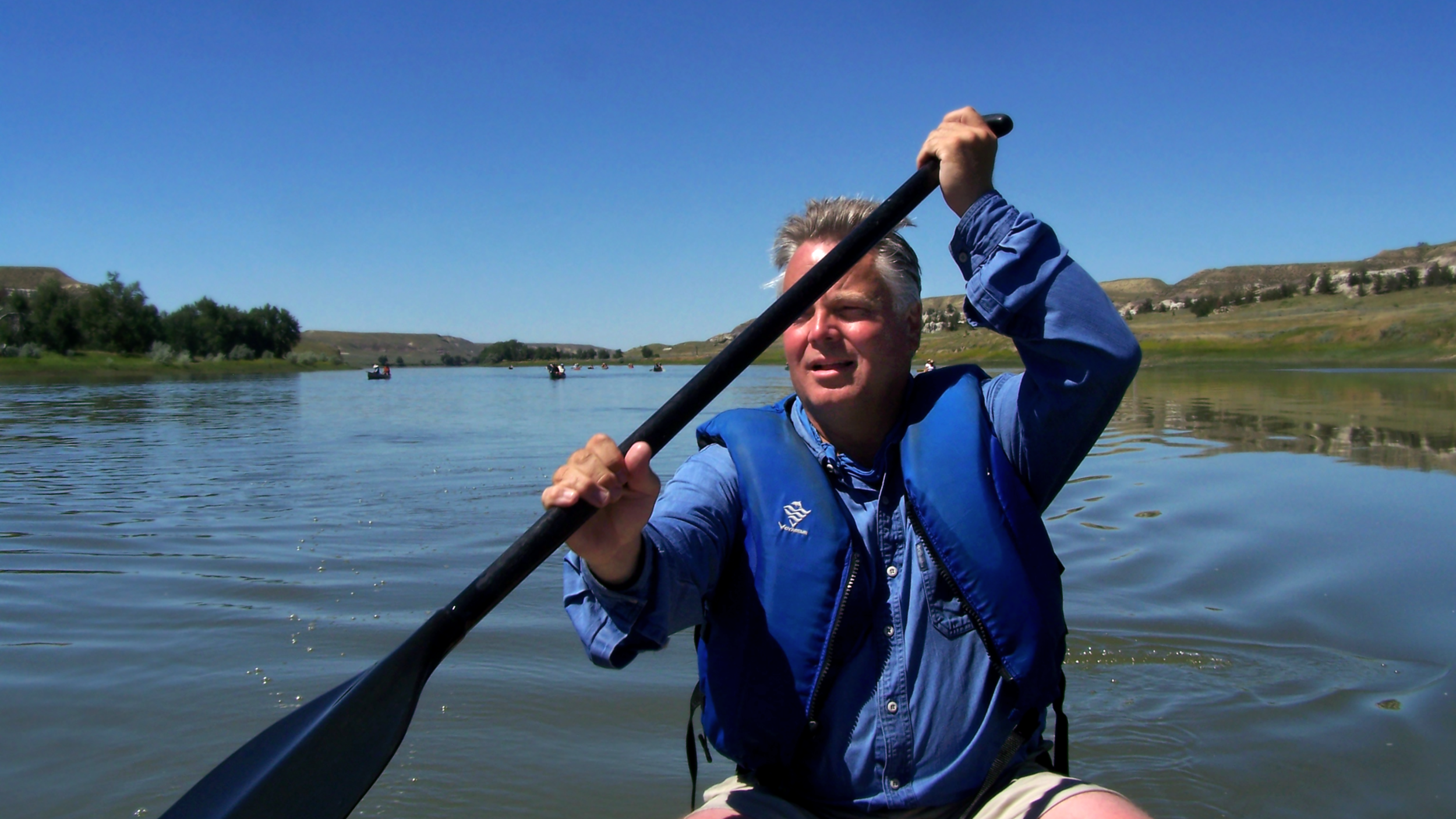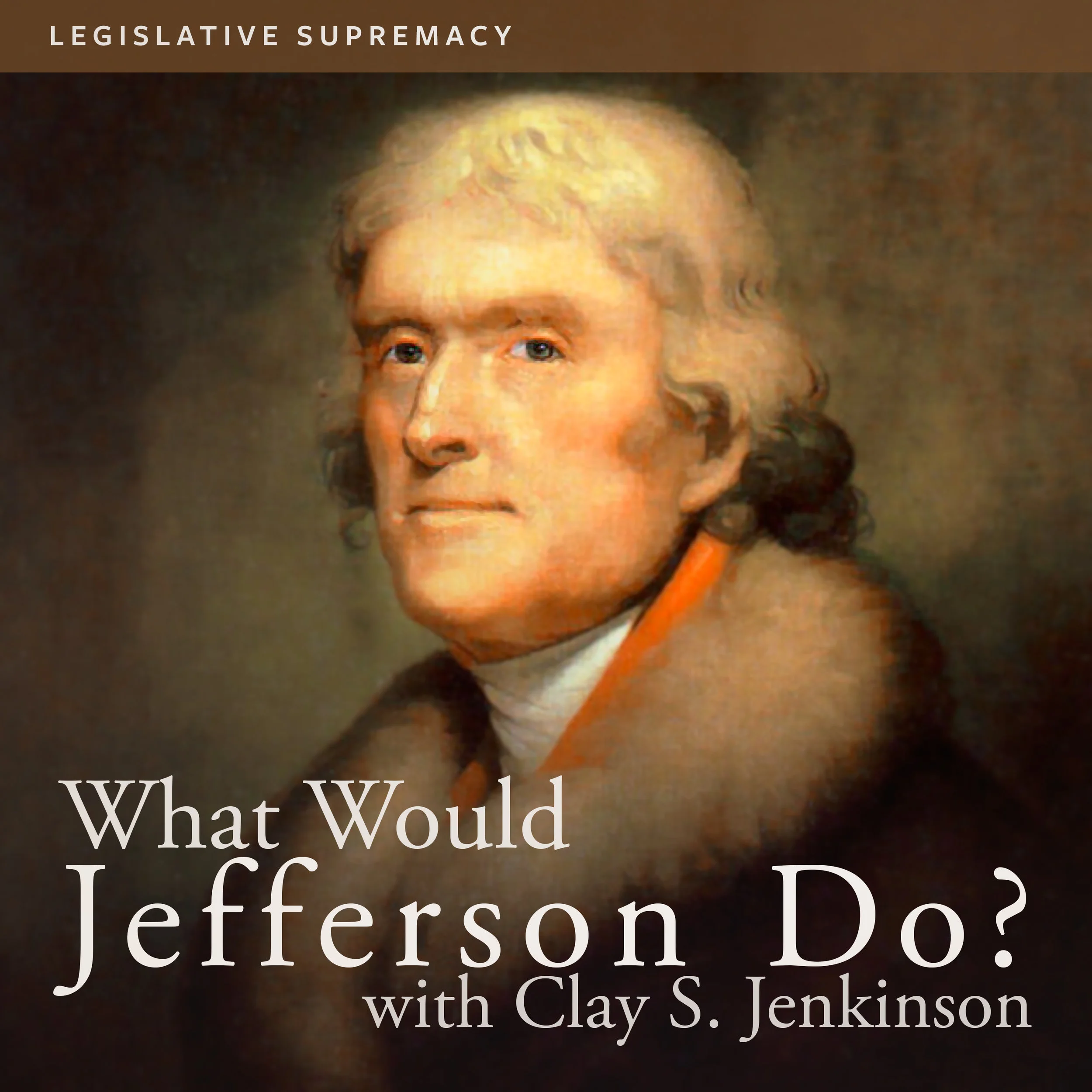“[Meriwether Lewis] kept promising copy and he never sent a single page. We don’t know what, if anything, became of his manuscript. We have nothing. He wouldn’t communicate with us.”
President Jefferson talks about the Lewis & Clark expedition and America's role as an “Empire of liberty". Jefferson, that Type A keeper of records, was disappointed that Meriwether Lewis failed to complete his book about the journey. Lewis was Jefferson's neighbor, his protégé, his private secretary in the White House, and he led the most successful expedition in American history — a voyage Clay & David have spent many years discussing, and one that Clay revisits by foot and by canoe each summer with Odyssey Tours.
Clay will be performing as Thomas Jefferson at the Ferguson Center for the Arts in Newport News, VA on April 19th, 2017. "I love the area of Newport News, Virginia Beach — that whole world," Clay proclaims in this week's podcast episode. "It's one of the places I get the greatest satisfaction in performing as the third president of the United States."
Find more info and buy tickets here.
Becky Cawley • (208) 791-8721 • odytours.net
Further Reading:
- The Character of Meriwether Lewis: Explorer in the Wilderness by Clay S. Jenkinson
- Lewis & Clark: The Journey of the Corps of Discovery by Ken Burns & Dayton Duncan
And So Once More to the Breach
The Jefferson Watch
From Clay:
The Lewis & Clark trail is thousands of miles long. It begins at Monticello, appropriately enough, and it ends at the mouth of the Columbia, at a place called Dismal Nitch. But without question the best part of the whole transcontinental trail lies between the confluence of the Judith and Missouri Rivers in eastern Montana, and Orofino, Idaho, on the Clearwater River on the other side of the Bitterroot Mountains. Best because it is most pristine. Best because it is the least damaged by industrial civilization. Best because on this section of the great journey you can actually stand where Lewis and Clark stood, camp where they camped, and walk precisely in their footsteps. It’s thrilling and moving and sometimes it gives you goosebumps.
Read Clay's Jefferson Watch essay, "And So Once More to the Breach".
Show Notes
Jefferson, as portrayed by Clay:
I was fascinated by these Mandan; the Mandan were legendary all the way into my world. I eventually met the great Coyote or Wolf — I think you call him Sheheke or Sheheke-shote — of the Mandan. I met him, he came to the White House at the end of 1806 and the beginnings of 1807. I sent some words back with him to Dakota. We had some difficulty getting him home, it turned out. He was one of the many Indian delegations that I was able to greet in my capacity as the President of the United States.
“In the White, linear world of historiography, oral tradition has been looked down upon as unreliable. Turns out, under the right conditions, it’s astonishingly reliable.”
What Would Jefferson Do?
“All positive legislation must come out of the congress of the United States. Any president who creates law from his desk should be impeached.”
Tune in to your local public radio or join the 1776 Club to hear this episode of What Would Thomas Jefferson Do?



This week, Clay Jenkinson discusses Jefferson’s first inaugural address with regular guest Lindsay Chervinsky. The speech, inaudibly delivered on March 4, 1801, is regarded as one of the top five in American history.
This week, Clay Jenkinson interviews frequent guest Beau Breslin of Skidmore College about the most famous decision in Supreme Court history.
Professor Beau Breslin of Skidmore College returns to the Thomas Jefferson Hour to talk about important passages that were edited out of key American documents of the Founding Era, including the famous anti-slavery passage of the Declaration of Independence.
This week's episode of the Thomas Jefferson Hour was recorded live at Radford University in Radford, Virginia in February 2023.